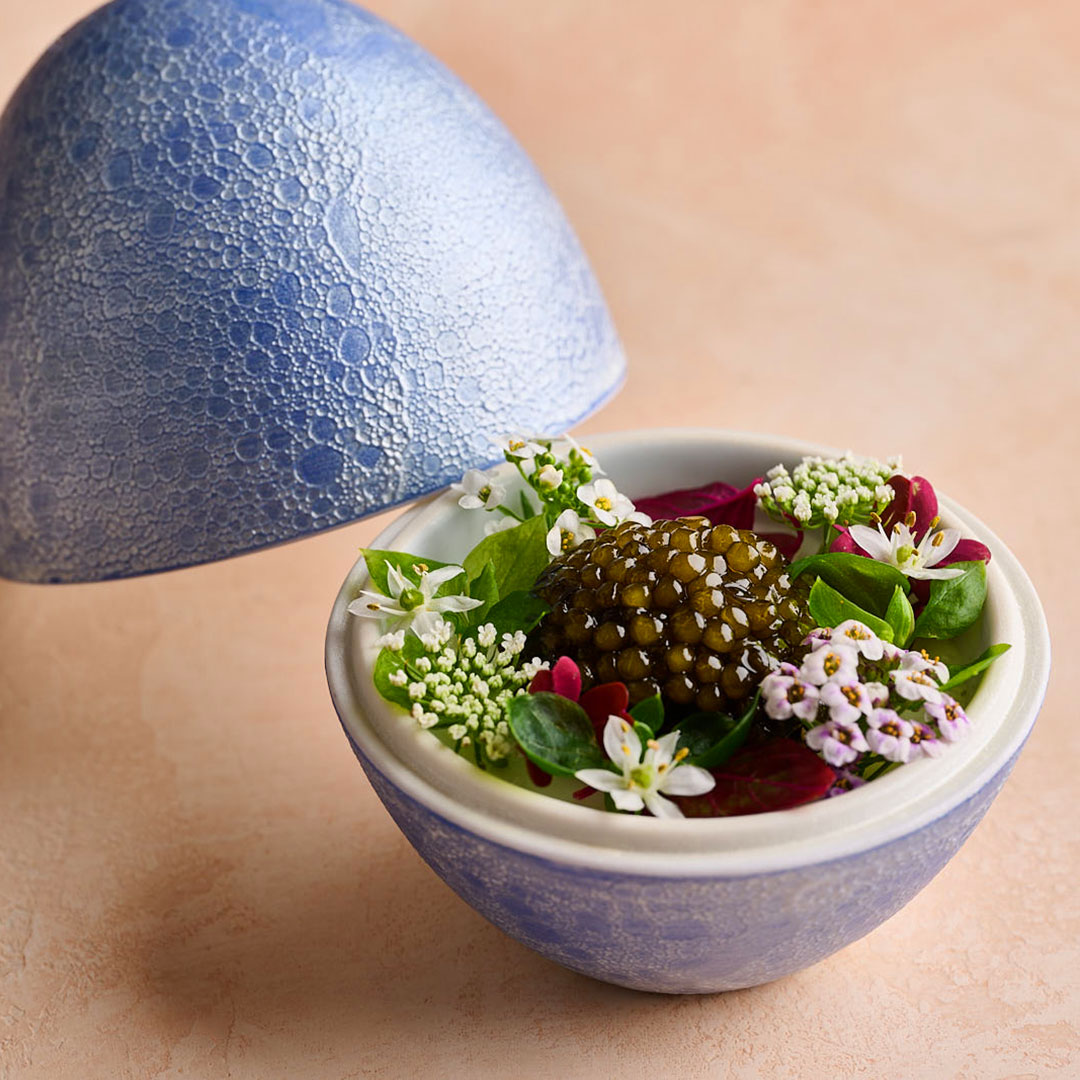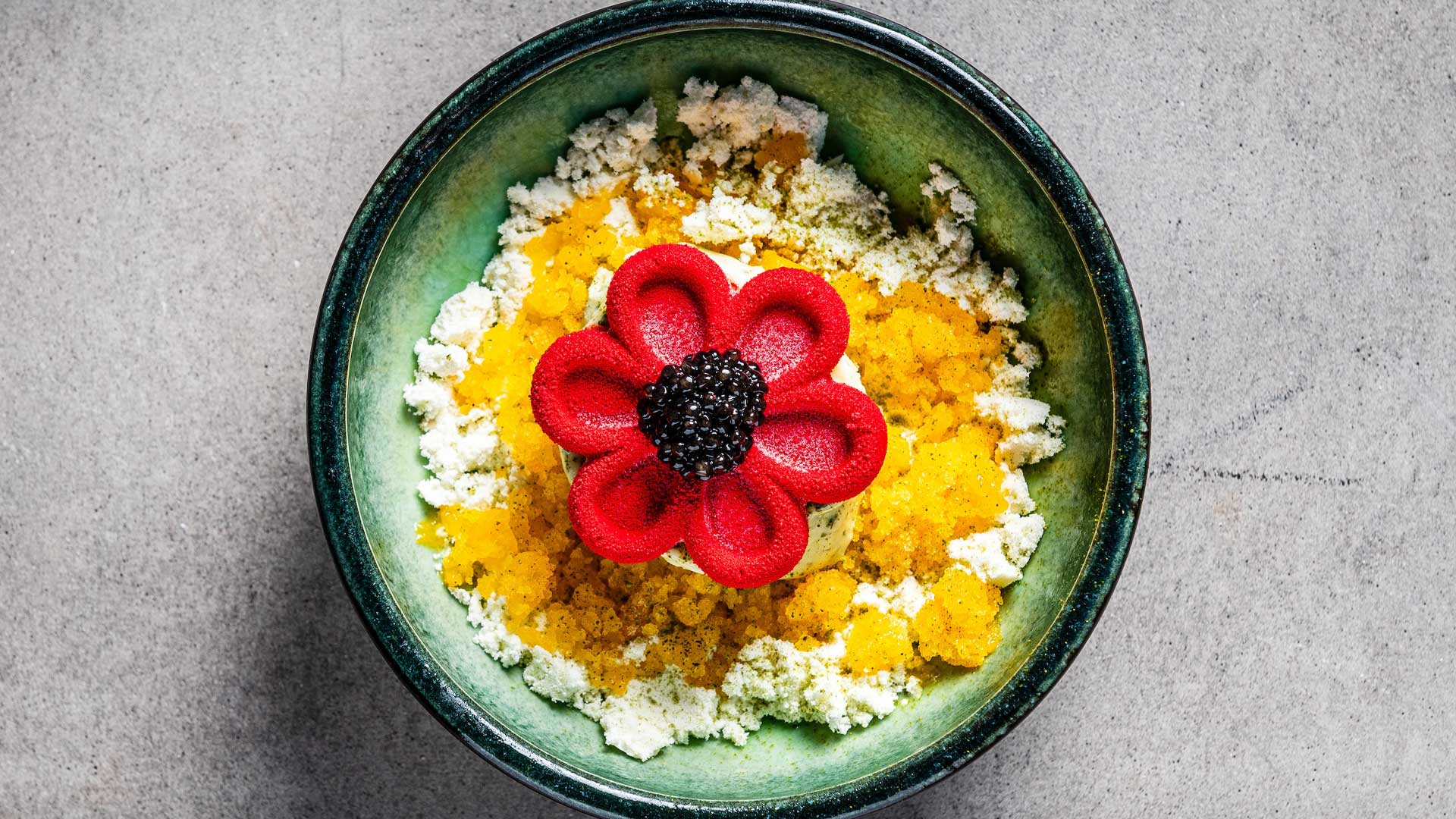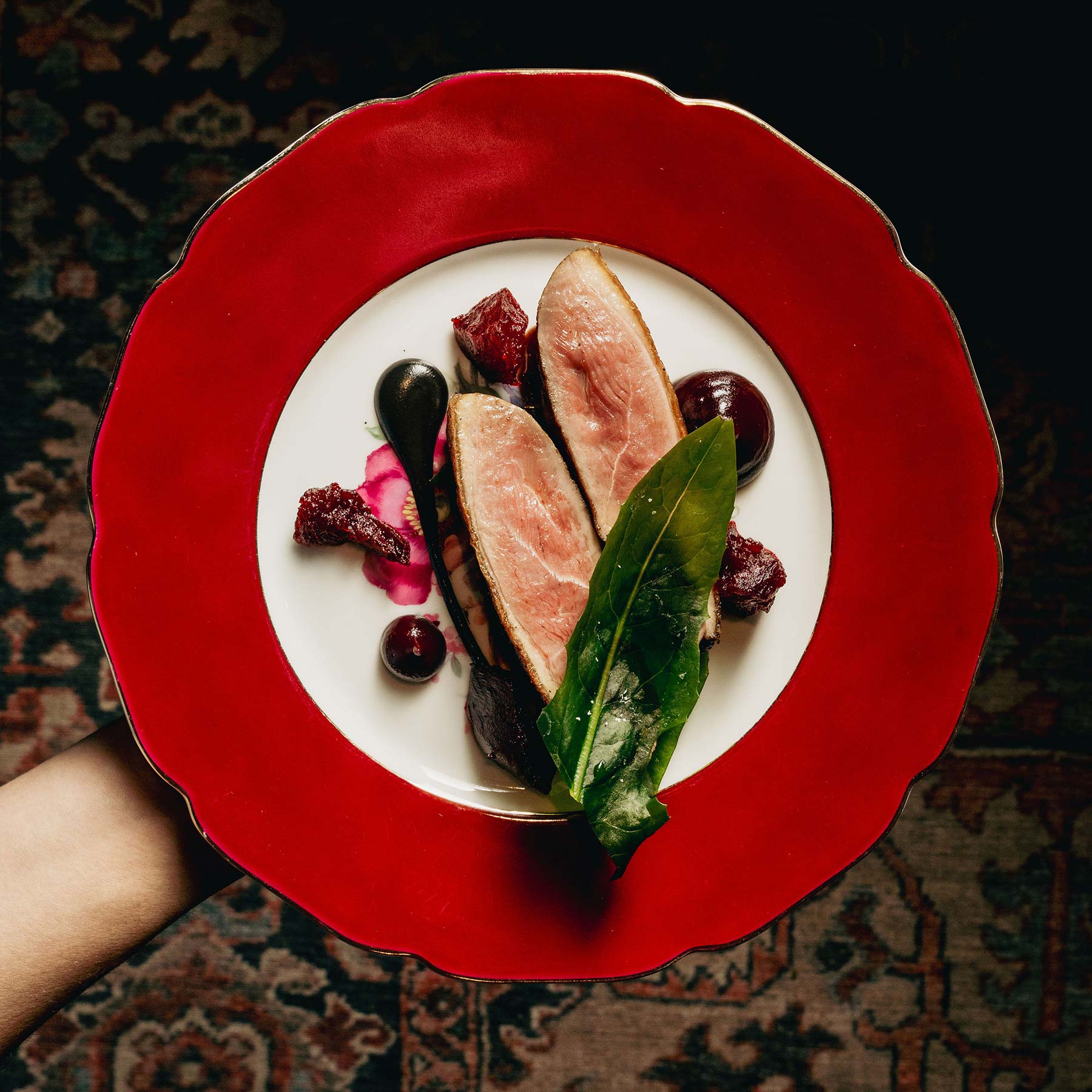Congratulations to the entire team at Blue Hill at Stone Barns! This year, the Two MICHELIN Star restaurant earned a Green Star presented by Illy, awarded for their deep and wide-ranging commitment to sustainability. The nonprofit Stone Barns Center for Food and Agriculture sets the national conversation for healthy and sustainable food systems. It's a conversation that carries onto the plate at its world-class restaurant which is on hiatus right now, replaced by a Chef in Residence program with themes of West Africa, the US South, Black diaspora, and inter-continental Indigenous foodways. On how to make Stone Barns as sustainable as possible, chef/co-owner Dan Barber said, "We sought to create a cuisine that answered a set of questions: How could we support the bottom line of small, independent farmers?" Here's how Stone Barns does it.

"When we opened [in 2004], we started to see that farm-to-table did not rework the economic and political forces that dictate how our food is grown and raised. Big Food got bigger, not smaller. So we doubled down: we cut the cover count in the dining room and created dishes with ingredients we already had (radish thinnings, trial kholrabi from a breeding farm). It became impossible to work on any kind of predictable menu. We were creating different dishes and a different menu for every table in the restaurant.
And so, we sought to create a cuisine that answered a set of questions: How could we support the bottom line of small, independent farms? Could we support what they actually needed to grow for the most ecologically resilient farm, not what we wanted them to grow? What if that kind of support acted as an engine for environmental improvement? What exactly did a menu that delivers on the economic viability of farmers and the ecological viability of their farm look like?"

Here's how Blue Hill at Stone Barns upholds its commitment to sustainability:
Local and seasonal ingredients
- They work with 64 local farms and six special farmers who deliver whatever they want when they want.
- They buy local first, organic second
- They purchase 30% of their winter menu in October and November to store, preserve, or ferment for the winter menu.
- They work with day boat fisherman off of long island and weekly purchase whatever they catch. This represents 80% of their seafood purchases.
- They give advance, no interest loans to half a dozen local farmers during January so these farmers can pay bills until spring and keep supplying Stone Barns.
- They source local, organic grains like wheat for their breads, and buy a tremendous amount of rotation grains like buckwheat, barley, millet, rye to support farmers who need to support soil health.
- They work with vegetable and grain breeders to develop delicious varieties that give better yield, are blight-resistant, and have lower input and require less energy to produce (less fertilizer and pesticides). Breeding selection and evaluation work means paying farmers and cooks to evaluate for flavor.

Food waste, waste recycling, and energy-sourcing
- They have bins for waste and recyclables, and the cooks dispose of everything else in one of the following: a bin for pigs, a bin for compost, and a bin for fermenting food scraps for laying hens.
- Their primary interest is preventing food waste beginning in the field and pasture: they serve only grass-fed beef and grass-fed milk. They don’t serve beef or milk that’s from cows fed grain.
- They serve mainly waste fed pigs—fed only scraps from the kitchen and the spent grains from local breweries.
- Corn cobs are ground up to become a substrate to grow oyster mushrooms.
- They buy male calves from dairy farmers (that are mostly killed at birth) and pay them to raise these calves for veal.
- They purchase at fair market value "expired" dairy cows from local dairies. They normally go to pet food for cents on the dollar. Stone Barns pays the farmer to raise them on pasture.
- They work with local farmers to identify which cover crops (tillage radish, sunflower) have a place in a restaurant kitchen and how to grow these as food crops. (Cover crops are never sold and simply plowed into the ground—a loss for farmers—so this work is meant to give organic farmers an economy for an otherwise valueless crop.).
- They do a lot of cooking directly in compost (and thus use free energy).
- They carbonize leftover bones after sauce making and create bone charcoal—which is then used as part of the grilling program.
- Local artist Gregg Moore creates bone china for plates and glassware out of leftover bones.
- Ceramics are made from clay from the farm at Stone Barns Center.


Hero image: Stone Barns Center. Photo by Alice Gao, courtesy of Blue Hill at Stone Barns
Keep up to date on the 2021 MICHELIN Star Revelation in Washington, D.C., Chicago, and New York.
Read more about sustainability at MICHELIN restaurants in California and around the world.
Find every restaurant in the New York MICHELIN Guide.
Download the new MICHELIN Guide app and get ready to eat well. Available now in the App Store and very soon for Android.
Meet 2021 New York Young Chef Award Winner Suyoung Park.
Meet 2021 New York Sommelier Award Dinner Miguel de Leon.























